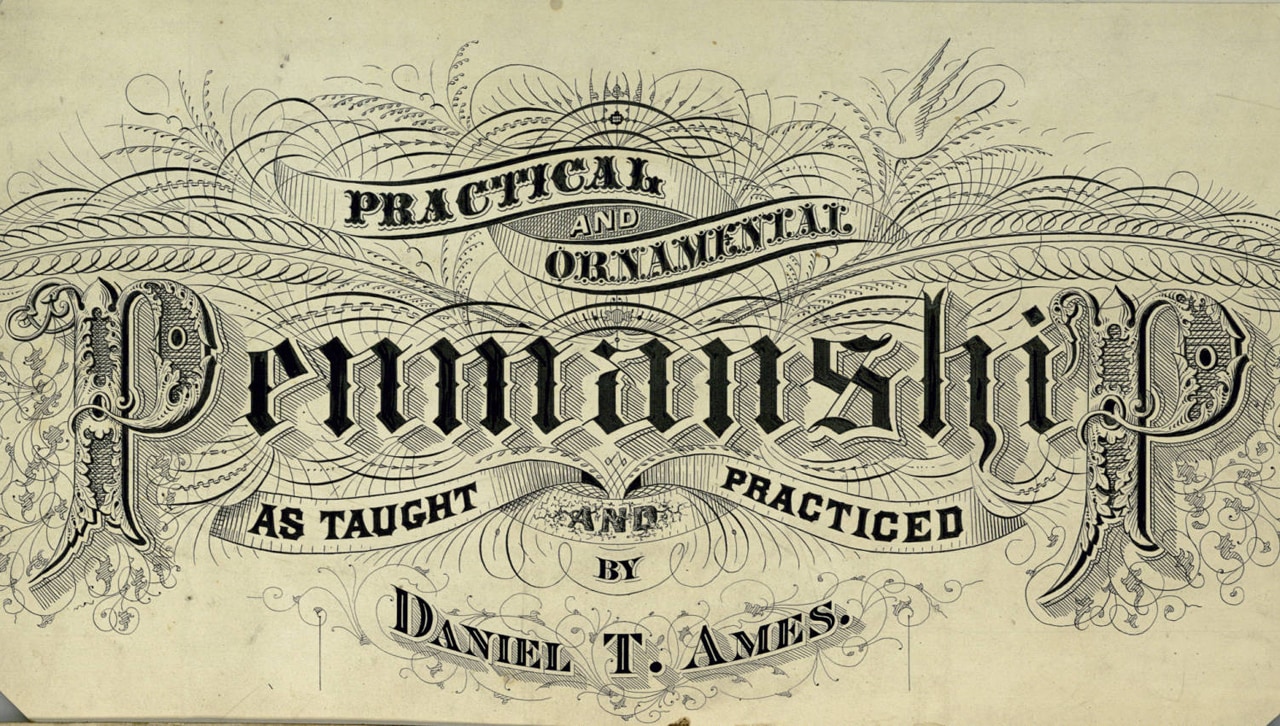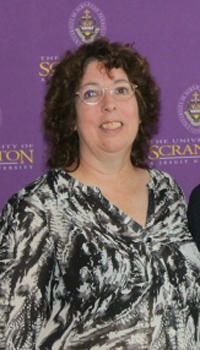Faculty Members Present Research to Peers

What do an itinerant penman and the vein of a plant have in common? They were both the subjects of recent talks at the University’s Research Seminar Series for faculty.
Michael Knies, associate professor and special collections librarian (pictured below, left), presented his research about the history of penmanship at the seminar series and Kathleen Dwyer, Ph.D., professor
Knies used the archives of the Zaner-Bloser Penmanship Company, which donated its collection to The University of Scranton in 2010, to delve into research about the history of penmanship. According to Knies, in the 1830s, Platt Rogers Spencer, an Ohio penmanship teacher, began to simplify handwriting after observing how business clerks wrote.
“They needed people to write clearly and quickly to do things like correspondence and keeping ledgers. It was a critical business skill,” explained Knies in a recent interview

“The receptor and the ligand proteins bind together, initiating a signal that may control plant development, sexual reproduction and/or plant defense,” she said. “We’re trying to figure out where and when the receptors and their ligands are expressed within the different plant tissues and what happens to the plant’s biology if a gene is “knocked out” or made nonfunctional.”
To characterize a gene’s expression, you take the DNA that controls where the protein is made and
“Now we’ve got an easily detected gene, controlled by the regulatory DNA of the gene of interest, so we can detect where the gene of interest is expressed,” she said. “The plant tissues will turn blue only at the corresponding sites and times. For example, we’ve got a real clear visual now of the SCRL7 gene being expressed only in the veins of the developing and mature plant.”
 Also to “knockout” the gene of interest, Dr. Dwyer explained that they use CRISPR — a technology that makes nonfunctional a particular gene, silencing the gene of choice — to see the effect on the plant’s biology. For example, some of the CRISPR plants wherein the SCRL7 gene has been silenced, are severely stunted. That is to be expected if the function of their vascular system has been impaired by lack of the SCRL7 protein. Her Molecular Biology 2 lab students are making the CRISPR constructs. Thus, they are all contributing to this research.
Also to “knockout” the gene of interest, Dr. Dwyer explained that they use CRISPR — a technology that makes nonfunctional a particular gene, silencing the gene of choice — to see the effect on the plant’s biology. For example, some of the CRISPR plants wherein the SCRL7 gene has been silenced, are severely stunted. That is to be expected if the function of their vascular system has been impaired by lack of the SCRL7 protein. Her Molecular Biology 2 lab students are making the CRISPR constructs. Thus, they are all contributing to this research.
The Research Seminar Series was established to meet the need for a time and place for faculty and staff research information exchange. It began with a research presentation on February 4, 2005. In its essence, the series is intended to build community and collegiality by setting the venue for faculty members to communicate to others just what they do.
Faculty, find out more about the seminar series and upcoming talks, here.






